Abstract
Rational composting process control involves the interrelated factors of heat output, temperature, ventilation, and water removal. The heat is released microbially at the expense of organic material; temperature is an effect and, because it is a determinant of microbial activity, it is also a cause of heat output; ventilation supplies oxygen and removes heat, mainly through the vaporization of water; water removal results from heat removal. These relationships were implemented in a field-scale process of static-pile configuration, using a mixture of sewage sludge and wood chips. Heat removal was matched to heat output through a temperature feedback control system, thereby maintaining biologically favorable temperatures. The observations indicate that fundamentally there are two kinds of composting systems: those that are and those that are not temperature self-limiting. The self-limiting system reaches inhibitive temperatures (>60°C) which debilitate the microbial community, suppressing decomposition, heat output, and water removal. In contrast, non-self-limiting temperatures (<60°C) support a robust community, promoting decomposition, heat output, and water removal.
Full text
PDF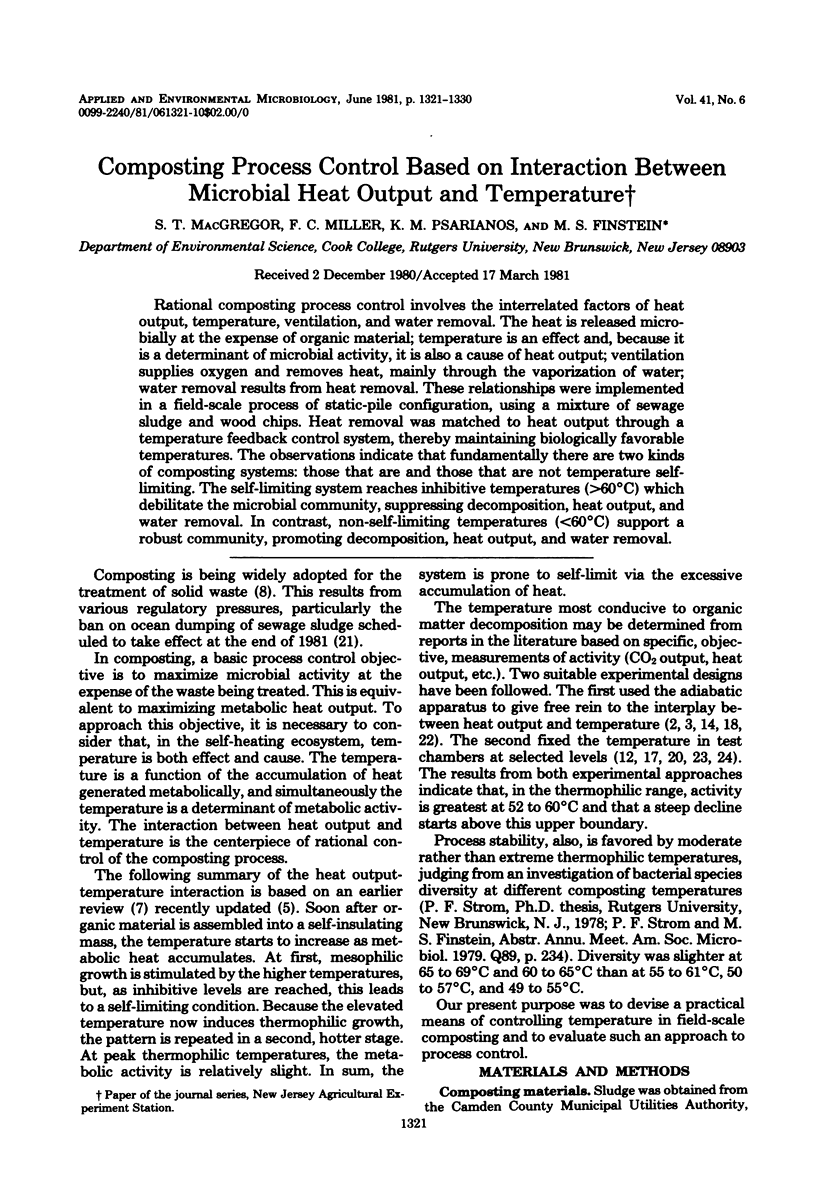
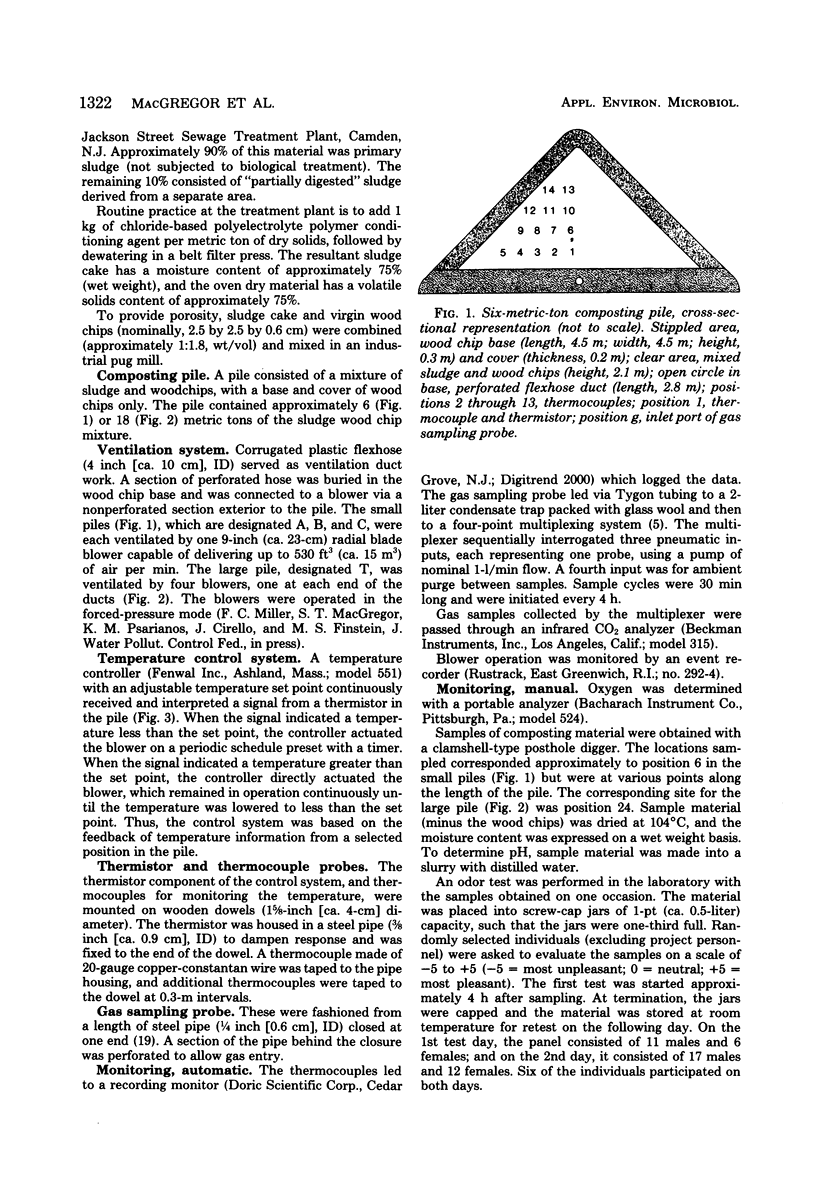
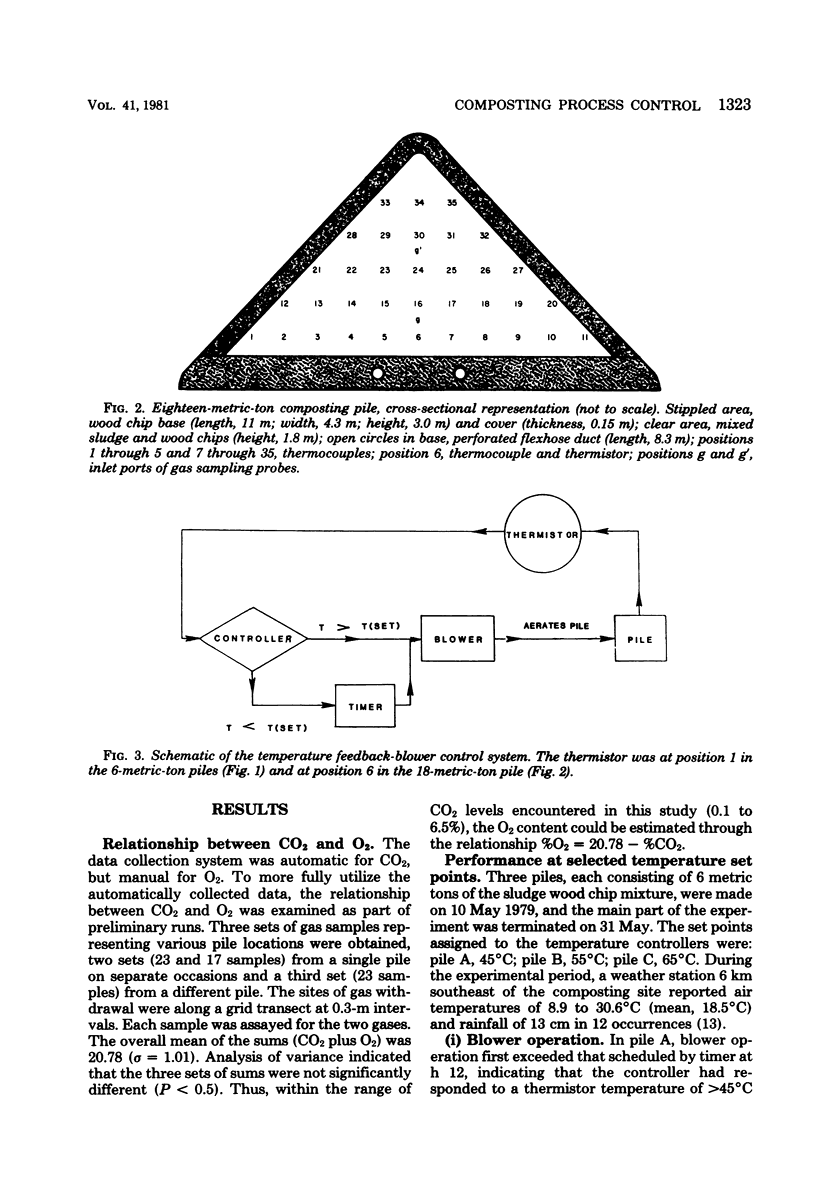
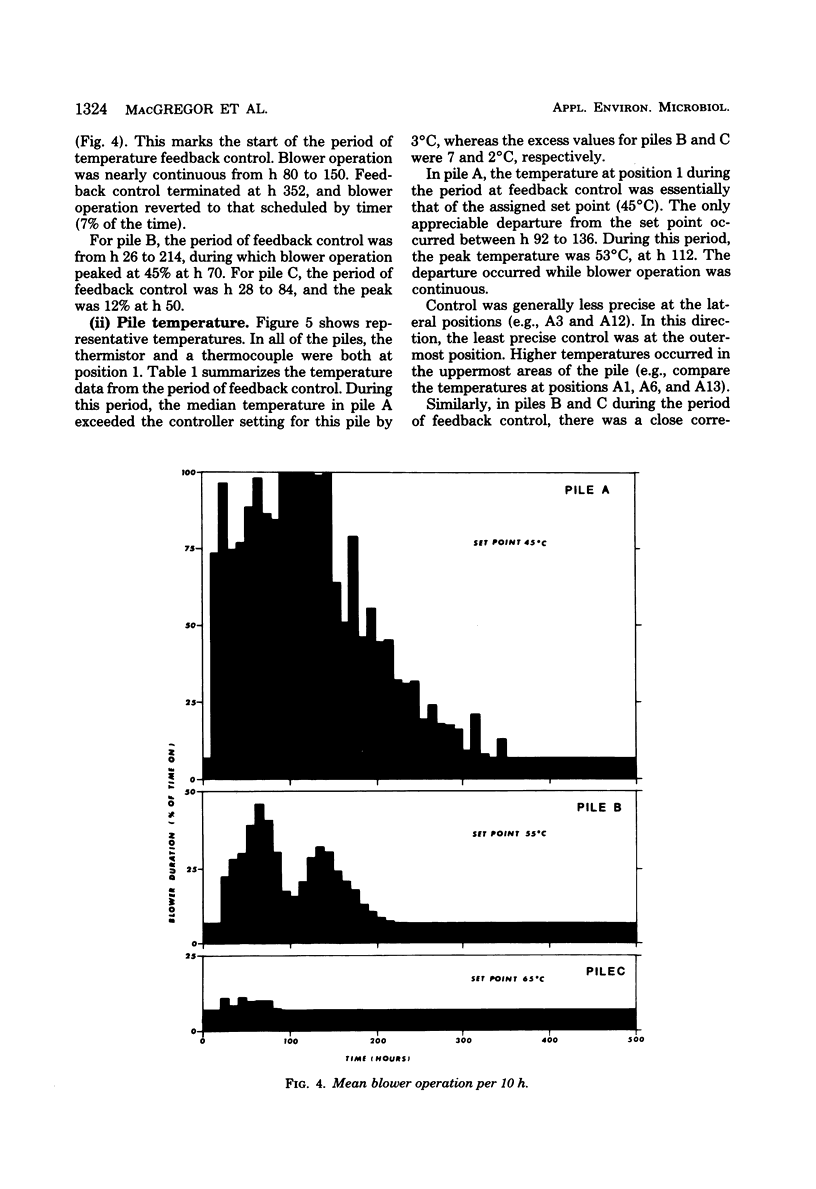
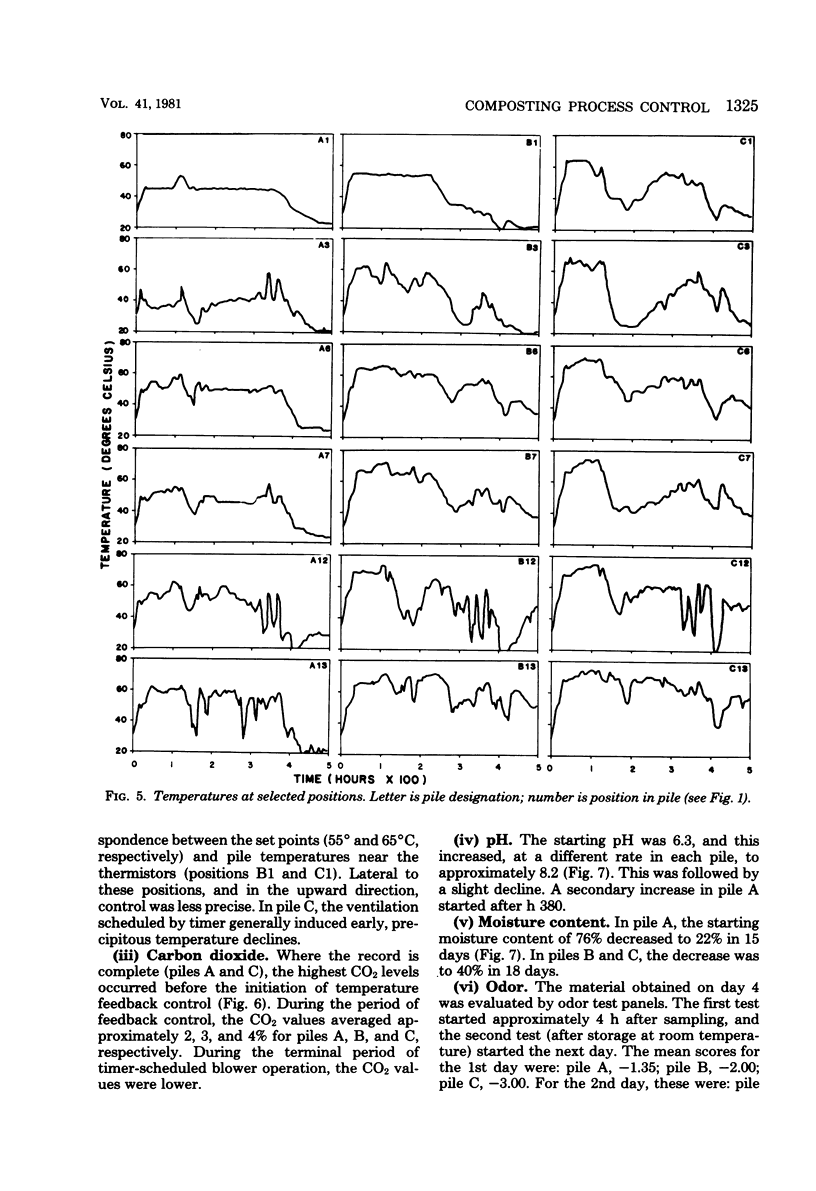
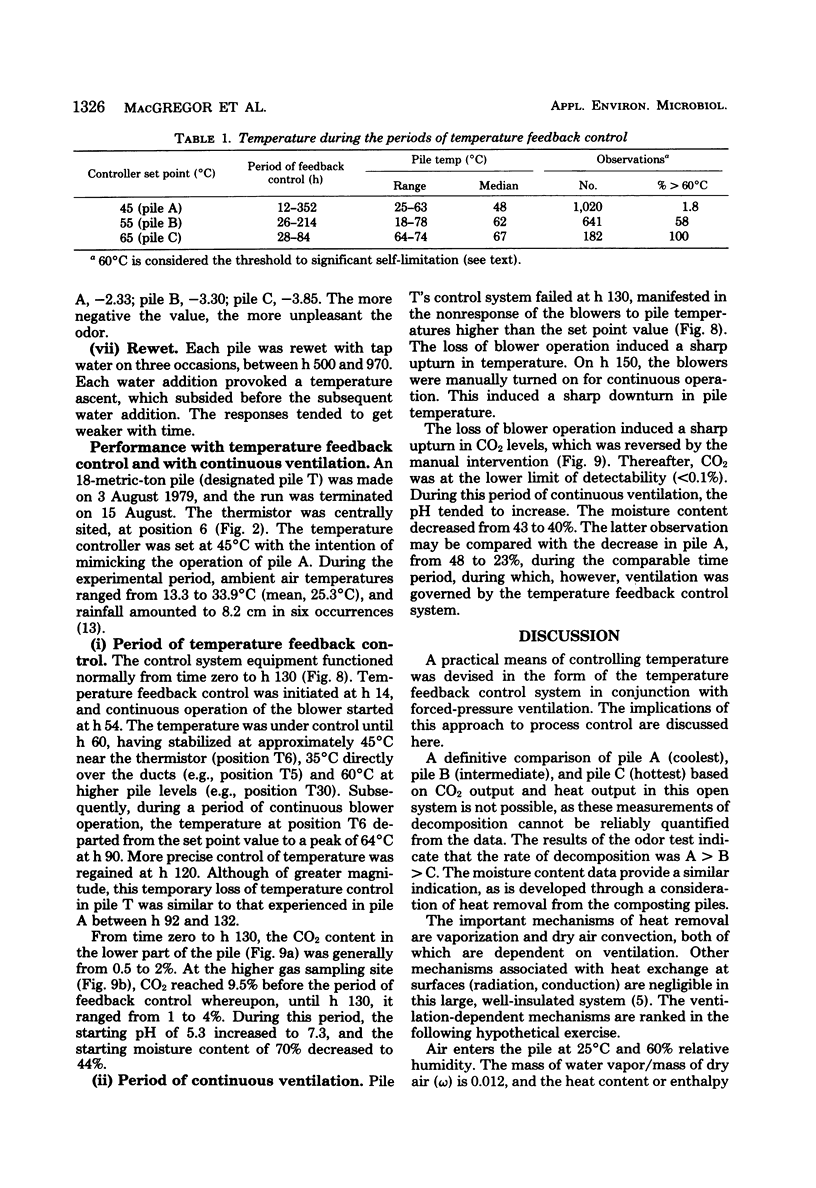
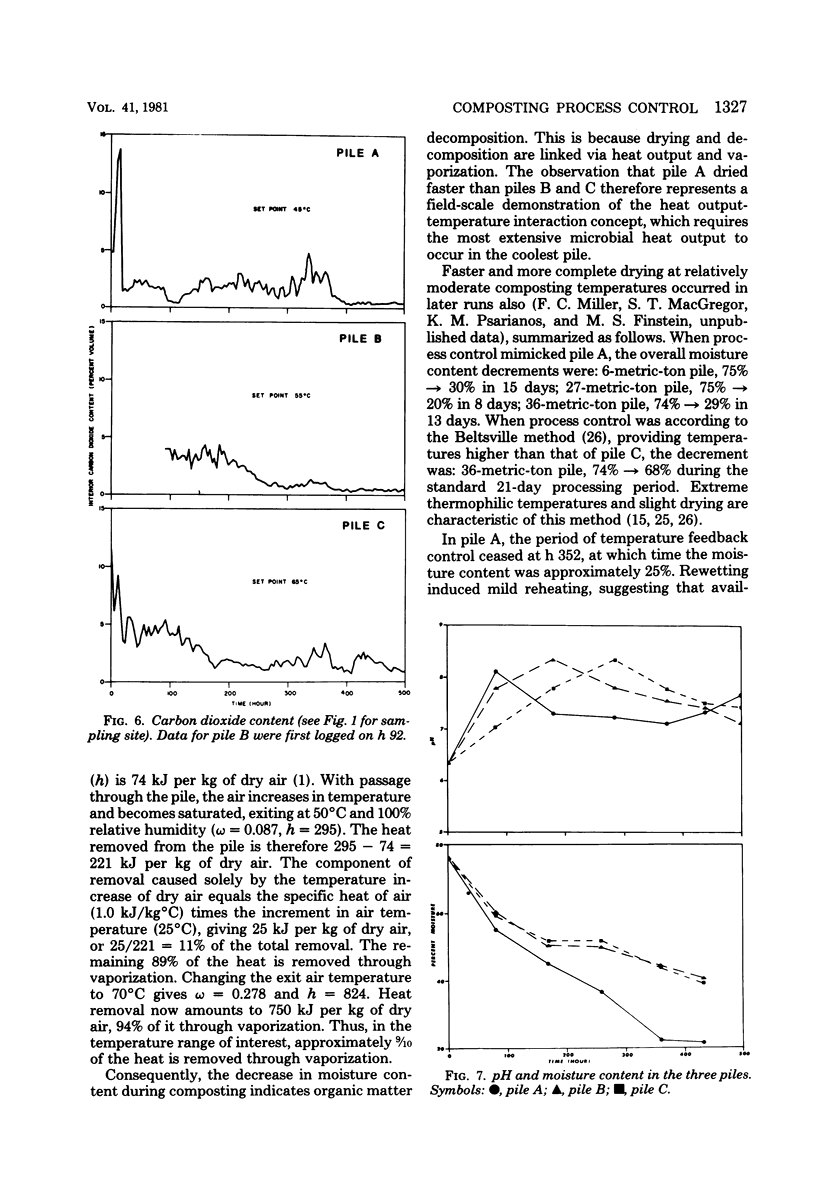
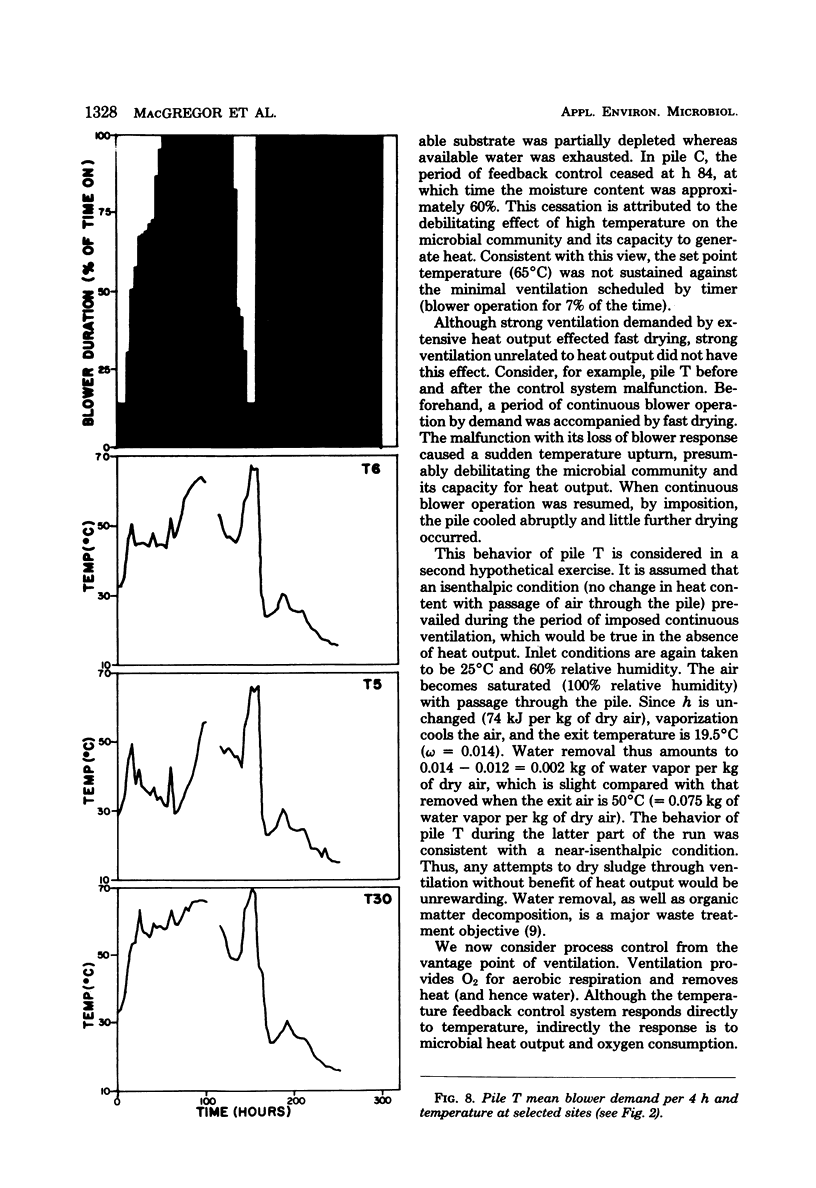
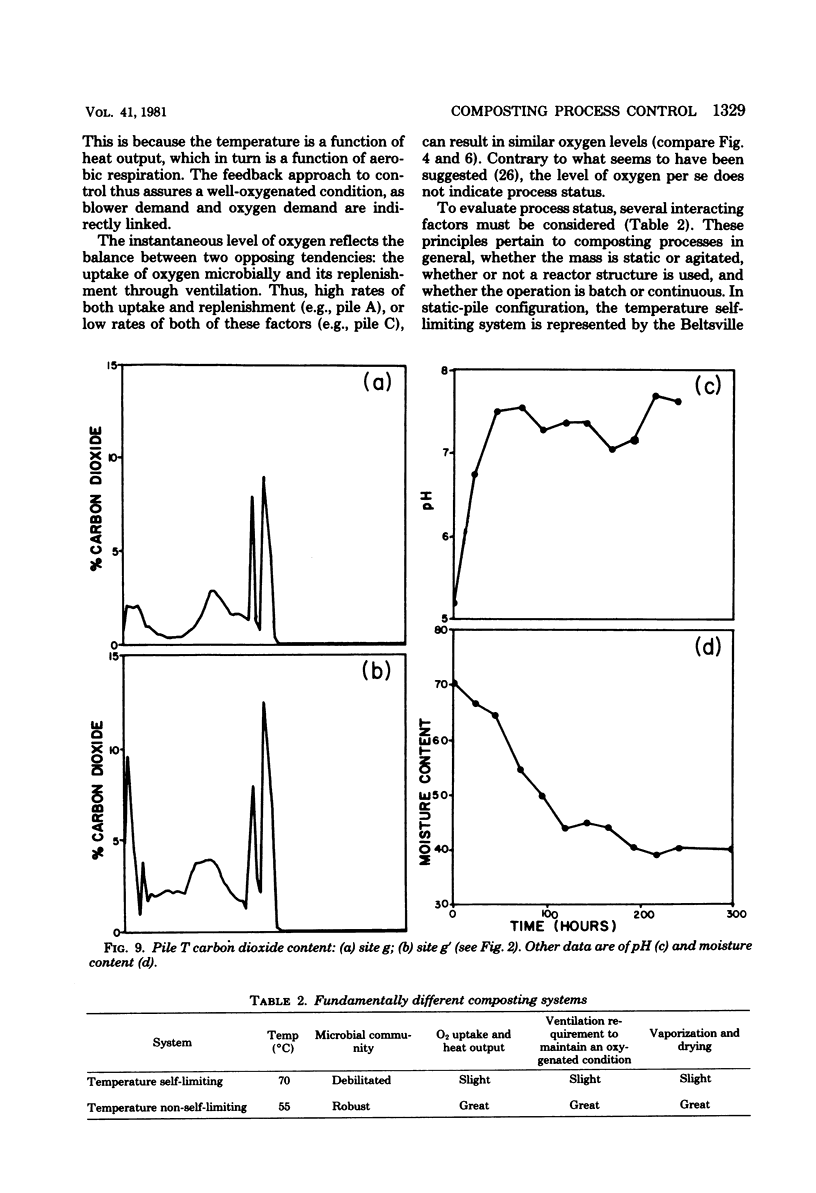
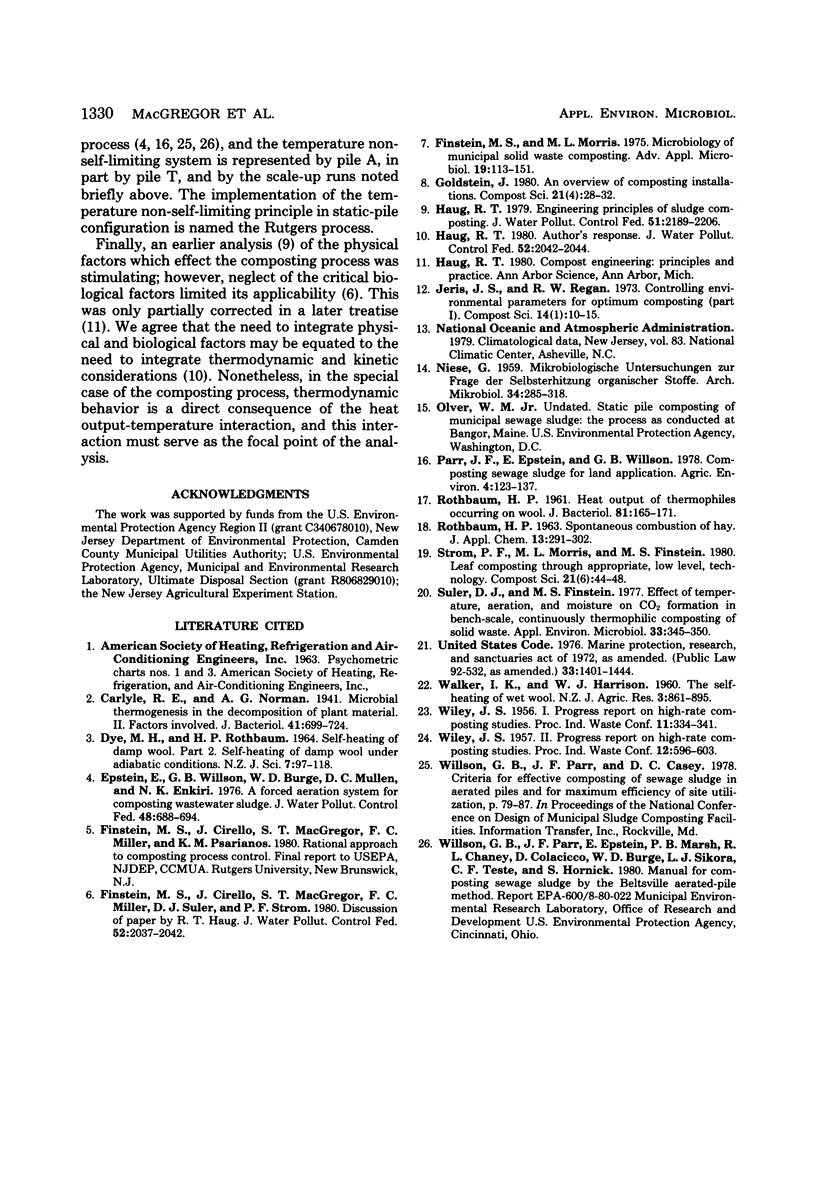
Selected References
These references are in PubMed. This may not be the complete list of references from this article.
- Carlyle R. E., Norman A. G. Microbial Thermogenesis in the Decomposition of Plant Materials: Part II. Factors Involved. J Bacteriol. 1941 Jun;41(6):699–724. doi: 10.1128/jb.41.6.699-724.1941. [DOI] [PMC free article] [PubMed] [Google Scholar]
- Finstein M. S., Morris M. L. Microbiology of municipal solid waste composting. Adv Appl Microbiol. 1975;19:113–151. doi: 10.1016/s0065-2164(08)70427-1. [DOI] [PubMed] [Google Scholar]
- NIESE G. [Microbiological studies on the problem of selfheating of organic substances]. Arch Mikrobiol. 1959;34:285–318. [PubMed] [Google Scholar]
- ROTHBAUM H. P. Heat output of thermophiles occurring on wool. J Bacteriol. 1961 Feb;81:165–171. doi: 10.1128/jb.81.2.165-171.1961. [DOI] [PMC free article] [PubMed] [Google Scholar]
- Suler D. J., Finstein M. S. Effect of Temperature, Aeration, and Moisture on CO(2) Formation in Bench-Scale, Continuously Thermophilic Composting of Solid Waste. Appl Environ Microbiol. 1977 Feb;33(2):345–350. doi: 10.1128/aem.33.2.345-350.1977. [DOI] [PMC free article] [PubMed] [Google Scholar]


